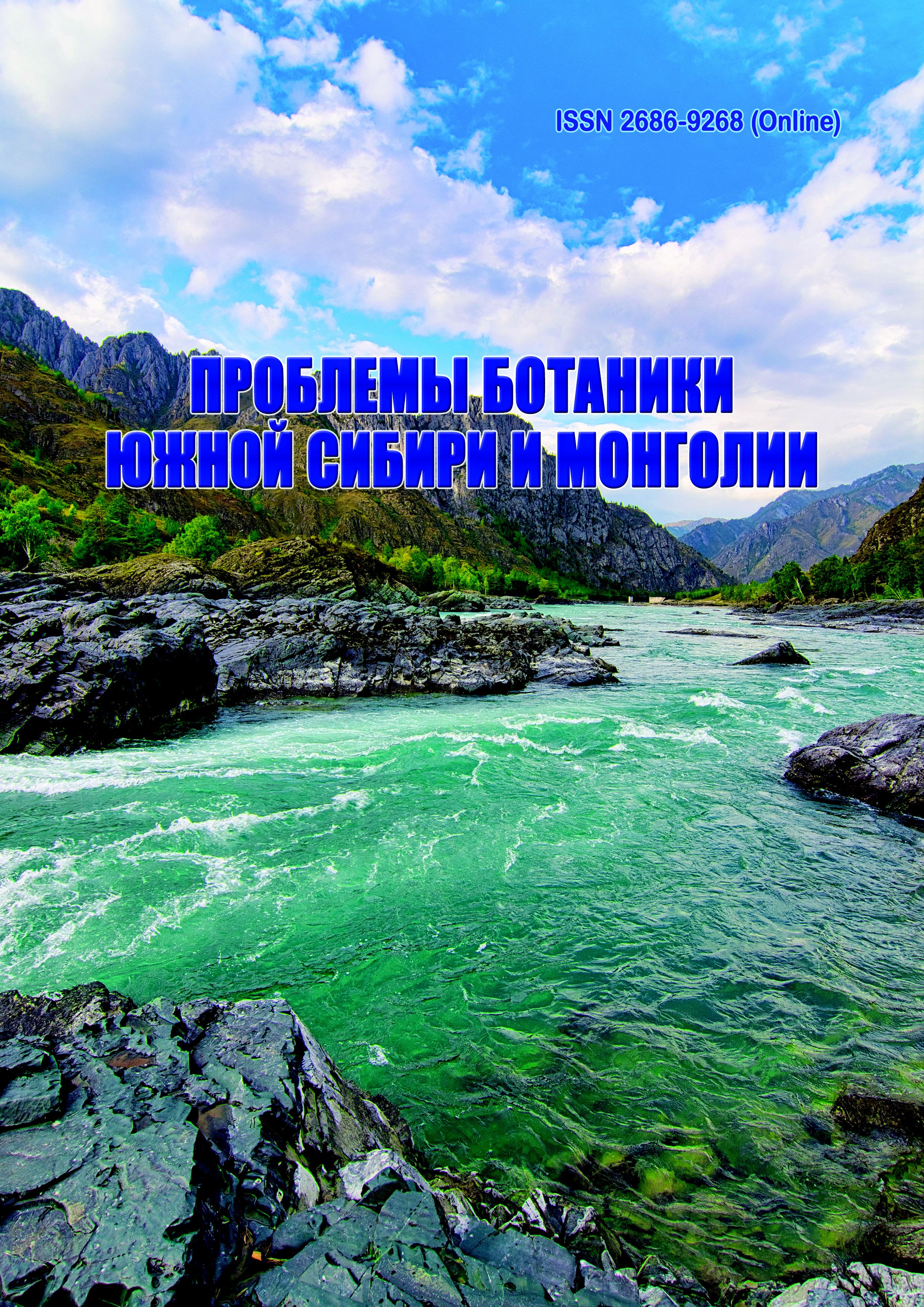Features of the floristic composition of communities with the participation of Malus sieversii on the territory of “Zhongar - Alatau” National Park
УДК 582.734.3+502.35
Abstract
Dzungarian Alatau mountain is a unique place of agrobiodiversity concentration. The apple forests consisted of the red book species Malus sieversii (Ledeb.) M. Roem. in combination with Abies sibirica Ledeb. and Populus tremula L. form a pronounced altitudinal-climatic band within 1200-1600 m in Dzungarian Alatau. In this article the features of the floristic composition of M. sieversii communities in four gorges of the Zhongar-Alatau National Park (Pikhto-voye, Mushabay, Kok-Zhota and Krutoye) were revealed. Plant species characteristic of the apple forest belt are shown. In the studied communities, there are 138 species of higher vascular plants from 110 genera, 42 families. The leading families in terms of the number of species are Asteraceae, Apiaceae, Rosaceae, Poaceae, Lamiaceae. Generic coefficient was revealed as 79.7 %. The ecological and geographical analysis of the noted species indicates that the floristic richness of the communities is mainly due to the natural conditions of growth, the leading of which are the height, exposure, moisture content of the substrate, and the closeness of the crowns of the tree canopy. In addition, the degree of anthropogenic impact on communities is of great importance.
Downloads
Metrics
References
Быков Б. А. Вводный очерк флоры и растительности Казахстана // Растительный покров Казахстана. - Алма-Ата, 1966. - Т. 1. - 164 с.
Браун Д. Методы исследования и учета растительности. - М., 1957. - 316 с.
Данилов М. П., Ситпаева Г. Т., Кудабаева Г.М., Веселова П. В., Шорманова А. А., Курмантаева А. А. Сибирские влияния в растительном покрове Джунгарского Алатау // Проблемы ботаники Южной Сибири и Монголии, 2019. - Т. 18, № 1. - С. 246-250. DOI: 10.14258/pbssm.2019050
Джангалиев А. Д. Яблоневые леса и вопросы развития горного садоводства в Заилийском и Джунгарском Алатау. - Алма-Ата: НИИ плодоводства и виноградарства. 1969. - 140 с.
Джангалиев А. Д. Дикая яблоня Казахстана. - Алма-Ата: Наука. 1977. - 280 c.
Голоскоков В.П. Флора Джунгарского Алатау: (конспект и анализ). - Алма-Ата: Наука, 1984. - 224 с.
Иллюстрированный определитель растений Казахстана. - Алма-Ата: Наука, 1969. - Т. 1. - 644 с.; 1972. - Т. 2. -571 с.
Корнилова В. С. Очерк истории флоры и растительности Казахстана // Растительный покров Казахстана. -Алма-Ата, 1966. - Т. 1. - 190 с.
Коровин Е. П. Растительность Средней Азии и Южного Казахстана. Кн. 2. - Ташкент, 1962. - 452 с.
Красная книга Казахской ССР. Редкие и находящиеся под угрозой исчезновения виды животных и растений. Ч. 2. Растения. - Алма-Ата, 1981. - 260 с.
Красная книга Казахстана. Изд. 2-е, перераб. и доп. Т. 2: Растения / Коллектив авторов. - Астана: ТОО «АртPrintXXI», 2014. - 452 с.
Оразова А. Определитель сорных растений Казахстана. - Алма-Ата: Кайнар, 1972. - 166 с.
Попов М. Г. Растительный покров Казахстана. - М.-Л.: «Известия АН СССР», 1940. - 214 с.
Ситпаева Г. Т. Конспект и определитель родов и видов злаков (Poaceae Barnhart) Заволжско-Казахстанской степной провинции. - Алматы: Интеллект, 2010. - 90 с.
Флора Казахстана / под ред. Н. В. Павлова: в 9 т. - Алма-Ата: Наука, 1956-1966.
Черепанов С.К. Сосудистые растения России и сопредельных государств (в пределах бывшего СССР). - СПб., 1995. - 990 с.
Dzhangaliev A. D. The wild apple tree of Kazakhstan // Hort. Rev., 2003. - Vol. 29, № 65. - 304 pp.
FAO. URL: https://www.fao.org/about/meetings/cofo/ru/ (Accessed January 2022).
Juniper B., Mabberley D. J. The story of the apple. - Timber Press, Portland, (OR), 2006. - 511 pp.
Zhou Z. Q., Li Y. N. The RAPD evidence for the phylogenetic relationship of the closely related species of cultivated apple // Genet Res Crop Evol., 2000. - Vol. 47. P. 353-357. DOI: 10.1023/A:1008740819941
Shadmanova L., Sitpayeva G., Mukanova G., Friesen N. Molecular-genetic analysis of Malus sieversii - comparison of Dzungarian populations in-situ and ex-situ // Turczaninowia, 2019. - Vol. 22, № 2. - С. 187-198. DOI: 10.14258/ turczaninowia.22.2.15



